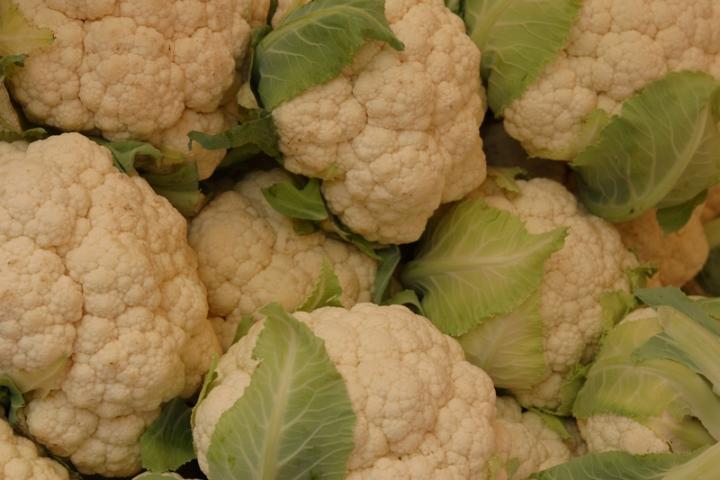
Cauliflower is a cool-season crop and a descendant of the common cabbage. It is more difficult to than its relatives because it does not tolerate the heat or cold as well. For this reason, cauliflower is usually grown commercially.
If you plant to attempt growing cauliflower in the home garden, it requires consistently cool temperatures with temperatures in the 60s. Otherwise, it prematurely “button”—form small button-size heads—rather than forming one, nice white head.
Planting
- Select a site with at lesat 6 hours of full sun.
- Soil needs be very rich in organic matter; add composted mature to the soil before planting. Fertile soil holds in moiture to prevent heads from “buttoning.”
- Test your soil! (Get a soil test through your cooperative extension office.) The soil pH should be between 6.5 and 6.8.
- It is best to start cauliflower from transplants rather than seeds. Transplant 2 to 4 weeks before the average frost date in the spring, no sooner and not much later.
- Space the transplants 18 to 24 inches apart with 30 inches between rows. Use starter fertilizer when transplanting.
- Plant fall cauliflower about the same time as fall cabbage. This is usually 6 to 8 weeks before the first fall frost and also need to be after the temperature is below 75 degrees F.
- If you really want to try starting cauliflower from seeds, start the seeds 4 to 5 weeks before the plants are needed. Plant the seeds in rows 3 to 6 inches apart and ¼ to ½ of an inch deep. Do not forget to water the seeds during their germination and growth. Once they become seedlings, transplant them to their permanent place in the garden.
- In early spring, be ready to cover your plants with old milk jugs or protection if needed. For fall crops, shade them if they need protection from the heat.
- Add mulch to conserve moisture.
Care
- Make sure that the plants have uninterrupted growth. Any interruption can cause the plants to develop a head prematurely or ruin the edible part completely.
- Cauliflower requires consistent soil moisture. They need 1 to 1.5 inches of water each week; with normal rainfall, this usually requires supplement watering.
- For best growth, side-dress the plants with a nitrogen fertilizer.
- Note that the cauliflower will start out as a loose head and it takes time for the head to form. Many varieties take at least 75 to 85 days from transplant. Be patient.
- When the curd (the white head) is about 2 to 3 inches in diameter, tie the outer leaves together over the head with a rubber band, tape, or twine. This is called blanching, and it protects the head from the sun and helps you get that pretty white color.
- The plants are usually ready for harvest 7 to 12 days after blanching.
Pests/Diseases
- Cabbageworm: Nectar from dwarf zinnias lures ladybugs and other predators that help to protect cauliflower from cabbageworms.
- Cabbage root maggots
- Aphids
- Harlequin bugs
- Clubroot
- Black rot
Harvest/Storage
- When the heads are compact, white, and firm, then it is time to harvest them. Ideally, the heads will grow 6 to 8 inches in diameter.
- Cut the heads off the plant with a large knife. Be sure to leave some of the leaves around the head to keep it protected.
- If the heads are too small but have started to open up, they will not improve and should be harvested.
- If the cauliflower has a coarse appearance, it is too mature and should be tossed.
- If you want to store cauliflower, you can put the head in a plastic bag and store it in the refrigerator. It should last for about a week.
- For long-term storage, you can also freeze or pickle the heads.
Recommended Varieties
- ‘Snowball’, which produces medium heads and a good yield throughout the growing season.
- ‘Orange’, which has a similar taste to the white cauliflower but has more vitamin A.
Wit & Wisdom
Cauliflower is nothing but cabbage with a college education.
-Mark Twain (1835-1910)
Recipes
- Cauliflower Soup
- Cauliflower Vinaigrette
- Cauliflower and Broccoli Casserole






